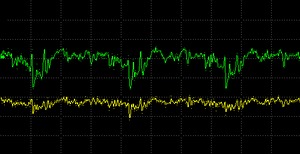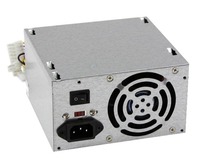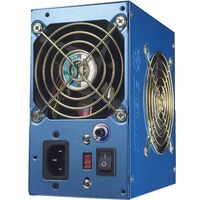Always look at the date when you read an article. Some of the content in this article is most likely out of date, as it was written on
December 6, 2004. For newer information, see
our more recent articles.
Introduction
The lowly power supply – In today’s world, the power supply is often assumed to be a commodity item. You’ve got one right? It says ‘Pentilon 4000+ compatible’ right? Great! Don’t worry about what kind it is – it’s just a power supply. Come on, admit it – you cringed when that guy at the computer store rang up your no-name power supply and it added $35 to your PC shopping spree – and for what? A little box with wires coming out of it! I can slice open a plain power cord and hook it into the motherboard for a lot less than $35, and it would be a lot nicer looking than that ugly gray box too!
A Problem of Appreciation
Maybe the problem is that we, as PC enthusiasts, do not grasp the full importance of a power supply. A power supply is like the heart of your PC – it pumps the juice to the various parts of the system. It’s smart about it too – it keeps the flow steady, and consistent. Now I know a lot of you don’t care about mundane things like the ebb and flow of electricity — you just want more raw silicon horsepower! Well, what can I say in the face of extreme overclockers pushing CPUs far past the limits they were designed for, sacrificing efficiency, stability, and in some cases even safety – and now I want to talk about a steady, consistent POWER SUPPLY!? The truth is, no one can say much to overclockers – their primitive hunger for faster texels, polygons and bit rates has overtaken their brains and driven them to the fervent pursuit of maximum speed, at any cost.
Let’s try and look at this from a different point of view: What does a computer do? When you get right down to it, a computer processes electricity, right? In a digital world, electricity means 1, no electricity means 0. From this perspective, we may start to grasp the worth of a good power supply.
The Importance of Consistency
As computer desktop operating systems and general productivity software become more stable and reliable, the power supply can present the weakest link in a computer system. A faulty power supply can cause intermittent lockups, rebooting, or even (in very extreme cases), fires. More importantly, and probably more commonly affected, are the power supply capacitors on your motherboard. Those are the big cylindrical components generally located near the CPU. Your CPU doesn’t like it when it doesn’t get steady, consistent power. These power supply capacitors on the motherboard basically filter out any noise given to them by the power supply. If these capacitors are regularly abused by your power supply, they will wear out faster. When they are dying, you will normally see them start to bulge at the top. This can affect the stability of your system quite dramatically. I have seen this happen with an old Abit board I had run in one of my systems just about constantly for 2.5 years or so. I have it relegated it to a corner of my desk, loaded with windows 95 and all those classic DOS-era games that I am so fanatical about. (Mechwarrior 2 is still the best of the series!). Anyway, basically what happens with it, is it will reboot intermittently – not very often, but it seems more likely to do it when the power in my room fluctuates a bit – the lights dim for a second, and bam! Down goes the legacy box!
 |
You see, while a power supply is supposed to supply a steady voltage, when you look at the voltage closely, you’ll find it looks more like the graph to the left…anything but steady! The better the power supply, the less the voltage jumps around. |
Recognizing the Good

So I’ve convinced you of the importance of a good power supply. (What’s that? You’re still not convinced? Hey, you must be a closet overclocker, go fry some CPUs or something.) So, the next question is “What is a good power supply?”, or maybe “What does a good power supply taste like?”, or, an admittedly less-likely possibility, “How do I know if it’s ripe?”. I read somewhere that the way to tell a quality power supply from one of questionable parentage is by its weight. If it’s a light power supply, you know it’s not going to be able to provide on that all-important +12v line, and the reverse would be true for a heavy supply. Now there is a certain amount of logic to that – a heavier power supply would indicate more heatsinks, larger capacitors, and heavier-duty inductors and coils. Or it could just indicate that the manufacturer has caught on and has introduced a large lead plate into the casing of their new line of power supplies.
 Of course, there is always the scientific method – I could grab one of each kind of power supply and run some tests to see what kind of performance each provided, what quality of capacitors was in each, or somesuch. That sounds like a lot of work, so I’m just going to recommend some brand names that I have had good luck with, and whose manufacturers I trust to build quality products. Enermax is the first that comes to mind, I have an old-model Enermax EG365P-VE which has been running my constantly-being-upgraded PC for at least 2 or 3 years now – it has nice solid cabling, long leads for the drive cables, a slick-looking black wrap around the wire-bundle that connects to the motherboard, and has kept my PC very reliable. The second brand I would recommend is Antec. Antec is a proven name – they’ve been around for almost two decades now, and their power supplies are not only quality-built, but feature some of the lowest noise-levels in the industry.
Of course, there is always the scientific method – I could grab one of each kind of power supply and run some tests to see what kind of performance each provided, what quality of capacitors was in each, or somesuch. That sounds like a lot of work, so I’m just going to recommend some brand names that I have had good luck with, and whose manufacturers I trust to build quality products. Enermax is the first that comes to mind, I have an old-model Enermax EG365P-VE which has been running my constantly-being-upgraded PC for at least 2 or 3 years now – it has nice solid cabling, long leads for the drive cables, a slick-looking black wrap around the wire-bundle that connects to the motherboard, and has kept my PC very reliable. The second brand I would recommend is Antec. Antec is a proven name – they’ve been around for almost two decades now, and their power supplies are not only quality-built, but feature some of the lowest noise-levels in the industry.
Conclusion
So, there you go. Now ditch that thirty-five dollar doorstop, and go back to reexamine the foundation of your PC.
Of course, there is always the scientific method – I could grab one of each kind of power supply and run some tests to see what kind of performance each provided, what quality of capacitors was in each, or somesuch. That sounds like a lot of work, so I’m just going to recommend some brand names that I have had good luck with, and whose manufacturers I trust to build quality products. Enermax is the first that comes to mind, I have an old-model Enermax EG365P-VE which has been running my constantly-being-upgraded PC for at least 2 or 3 years now – it has nice solid cabling, long leads for the drive cables, a slick-looking black wrap around the wire-bundle that connects to the motherboard, and has kept my PC very reliable. The second brand I would recommend is Antec. Antec is a proven name – they’ve been around for almost two decades now, and their power supplies are not only quality-built, but feature some of the lowest noise-levels in the industry.